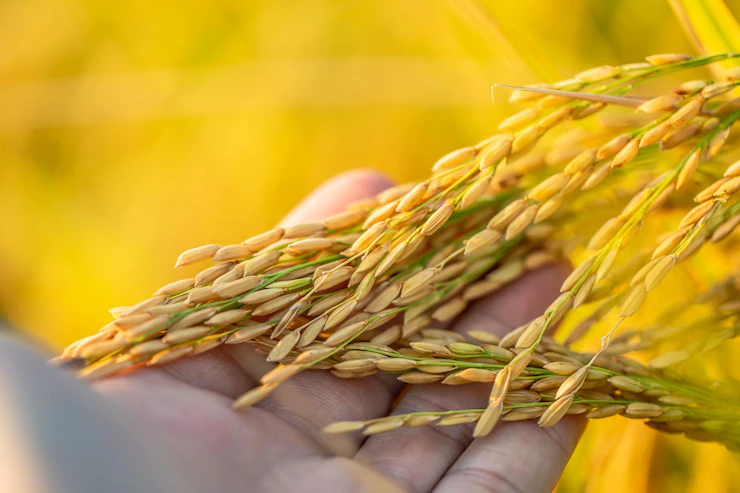When growing rice in South Africa, there are several infections and diseases that you should be aware of. Here are some common ones:
- Rice blast (Pyricularia oryzae): Rice blast is one of the most destructive diseases affecting rice worldwide. It is caused by a fungus that attacks the leaves, stems, panicles, and grains of the rice plant. Symptoms include elliptical lesions with gray centers and brown margins on the leaves, neck blast on the panicles, and empty or discolored grains. To manage rice blast, choose disease-resistant rice varieties, practice crop rotation, and apply appropriate fungicides when necessary.
- Bacterial leaf blight (Xanthomonas oryzae pv. oryzae): Bacterial leaf blight is caused by a bacterium and can result in yield losses. Symptoms include water-soaked lesions that later turn yellow and then brown. The disease spreads through infected seeds, wind, and water. Crop rotation, seed treatment, and foliar sprays of copper-based bactericides can help control bacterial leaf blight.
- Sheath blight (Rhizoctonia solani): Sheath blight is a fungal disease that affects rice plants during both vegetative and reproductive stages. It causes lesions on leaf sheaths, which can spread to other plant parts. Infected plants exhibit wilting and lodging, leading to yield losses. Cultural practices such as avoiding excessive nitrogen fertilization and maintaining proper plant spacing can help manage sheath blight. Fungicide applications may be necessary in severe cases.
- Tungro disease: Tungro is a viral disease transmitted by leafhoppers. It affects rice plants by stunting their growth and reducing grain production. Infected plants exhibit yellowing and reduced tillering. To manage tungro disease, plant resistant rice varieties and control the population of leafhoppers through insecticide applications and other integrated pest management practices.
- Rice yellow mottle virus (RYMV): Rice yellow mottle virus is a viral disease that causes yellowing and mottling of rice leaves. It can significantly reduce rice yields. The virus is transmitted by insects, primarily by the white-backed planthopper. Planting resistant varieties, removing infected plants, and implementing proper insect control measures are important for managing RYMV.
It’s crucial to consult local agricultural extension services, research institutions, or agronomists in South Africa for the most up-to-date information on specific diseases and recommended control measures. They can provide region-specific guidance based on the prevailing conditions and rice varieties grown in your area.
Join 'Farmers Mag' WhatsApp Channel
Get the latest Farming news and tips delivered straight to your WhatsApp
CLICK HERE TO JOIN






